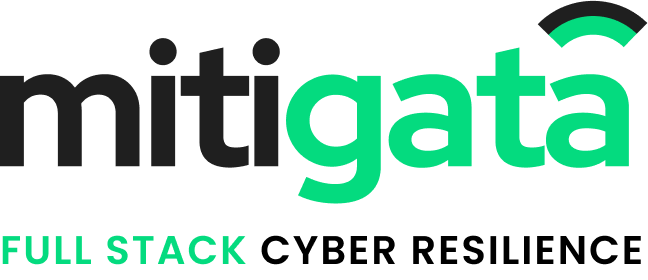What’s Inside a Cybercriminal’s Mind?
With the onset of Cybersecurity Awareness Month, the digital threat landscape appears more complex and persistent than ever. The industrialisation of cybercrime has resulted in a highly advanced environment in which attacks are faster, more personalised, and more threatening than ever before. To defend ourselves as individuals, businesses, and public institutions, we need to understand the attacker’s playbook.
This article discusses the current threat landscape, utilising the Cyber Kill Chain, to gain a deeper understanding of the attack lifecycle. It uses the MITRE ATT&CK framework to detail attacker strategies and identifies important vulnerabilities using the OWASP Top 10.
The 2024-25 Landscape: An Industrialised Threat
The cybercrime ecosystem has evolved into a fully fledged, profit-driven industry. Key trends define the current climate:
- The Evolution of Ransomware: Although we have seen fluctuations in the frequency of specific ransomware attacks, the threat landscape has continued to evolve. Attackers are now increasingly focusing on data theft and extortion, where they threaten to release sensitive data rather than just encrypting it.
- The rise of “as-a-service” models, such as Cybercrime as a Service (CaaS), has transformed the cyber threat landscape. Threat actors can now easily rent tools such as malicious software, botnet services, and phishing kits, significantly reducing the entry barrier.
- AI in the attacker’s arsenal: Artificial intelligence is utilised to craft convincing phishing emails, develop malicious code, and execute multi-vector DDoS attacks with real-time adaptive alterations.
Mapping the Attack: The Cyber Kill Chain
The Cyber Kill Chain model outlines the stages of a targeted attack. Here’s how modern threats move through it.
- Reconnaissance: Attackers collect information from massive data leaks or utilise artificial intelligence to scrape public profiles from social media and professional networks, enabling them to launch highly targeted operations.
- Weaponisation: This is where CaaS thrive. Attackers buy ready-made attack kits from underground forums, combining malware with AI-generated traps that are almost indistinguishable from regular messages.
- Delivery: The primary vector remains phishing, but it has evolved into smishing (SMS) and vishing (voice calls). There has been a significant rise in smishing, using brief, compelling messages about parcel deliveries or fake security alerts.
- Exploitation: Attackers exploit vulnerabilities in software or, most commonly, human psychology (social engineering). A thriving market also exists for “initial access brokers” who sell pre-compromised access to corporate networks.
- Installation: Infostealers – a malicious software designed to gather passwords, cookies, and financial information, are installed. They serve as the foundation for more severe attacks, such as ransomware.
- Command & Control (C2): The malware establishes a connection to a server controlled by the attacker, often utilising “bulletproof hosting” services in jurisdictions with limited law enforcement presence.
- Actions on Objectives: This is the final stage where the damage occurs: the data is encrypted, exfiltrated, and sold, or used for financial fraud. A common tactic is “double extortion” (encrypting data and threatening to leak it), and even “triple extortion” (adding a DDoS attack to increase pressure).
The Attacker’s Toolkit: A MITRE ATT&CK Perspective
The MITRE ATT&CK framework catalogues the specific techniques attackers use. The current threat landscape is a live demonstration of these techniques:
- Initial Access (TA0001):
Phishing (T1566): The most common method, now supercharged by AI for hyper-personalisation.
Exploit Public-Facing Application (T1190): Targeting vulnerabilities in web applications, closely tied to the OWASP Top 10.
- Execution (TA0002):
User Execution (T1204): Tricking users into opening malicious attachments or links.
- Credential Access (TA0006):
Credentials from Password Stores (T1555): A primary function of infostealers.
Brute Force (T1110): Conducted at scale by botnets.
- Impact (TA0040):
Data Encrypted for Impact (T1486): Ransomware.
Network Denial of Service (T1498): DDoS-as-a-Service attacks.
Resource Hijacking (T1496): Utilising victim systems for cryptocurrency mining.
The Weakest Links: OWASP Top 10 and Human Vulnerability
The OWASP Top 10 outlines the critical application security risks that attackers frequently target. These vulnerabilities are the “open doors” that allow the kill chain to progress.
- A03:2021-Injection: Flaws that allow attackers to send malicious data to an interpreter are a key method for compromising databases and gaining an initial foothold.
- A06:2021- Vulnerable and Outdated Components: Unpatched systems, particularly those in the rapidly growing Internet of Things (IoT), are excellent targets for botnet infection and ransomware deployment.
- A07:2021-Identification and Authentication Failures: This category includes weak passwords and poor multi-factor authentication systems, which are used in credential stuffing attacks and SIM-swapping fraud to wipe out financial and cryptocurrency accounts.
Human vulnerability remains the principal attack vector. The most sophisticated technical defences can be undone by a single convincing phishing email or a vishing call from a fake “bank security advisor.” This aligns perfectly with the spirit of OWASP and Cybersecurity Awareness Month: technology is only one layer of defence.
Fighting Back: A Collective Defence for Cybersecurity Month
For Cybersecurity Awareness Month, here is your action plan to build resilience:
- Educate and Train: Consistently train employees and family members to detect phishing, vishing, and social engineering. They are the human firewall.
- Patch Relentlessly: Prioritise patching for known vulnerabilities listed in the OWASP Top 10, particularly in public-facing applications and connected devices.
- Assume Breach: Implement security controls mapped to the MITRE ATT&CK framework, such as advanced Endpoint Detection and Response (EDR) and strong, phishing-resistant multi-factor authentication (MFA).
- Prepare for the Inevitable: Develop an Incident Response (IR) Plan. Anticipate how you will respond to a ransomware attack or a data breach to minimise downtime and damage.
Cybersecurity is a shared responsibility. By understanding the tools, tactics, and procedures used against us, we can shift from a reactive to a proactive and resilient cybersecurity approach.
Stay Safe. Stay Secure. Stay Informed.

